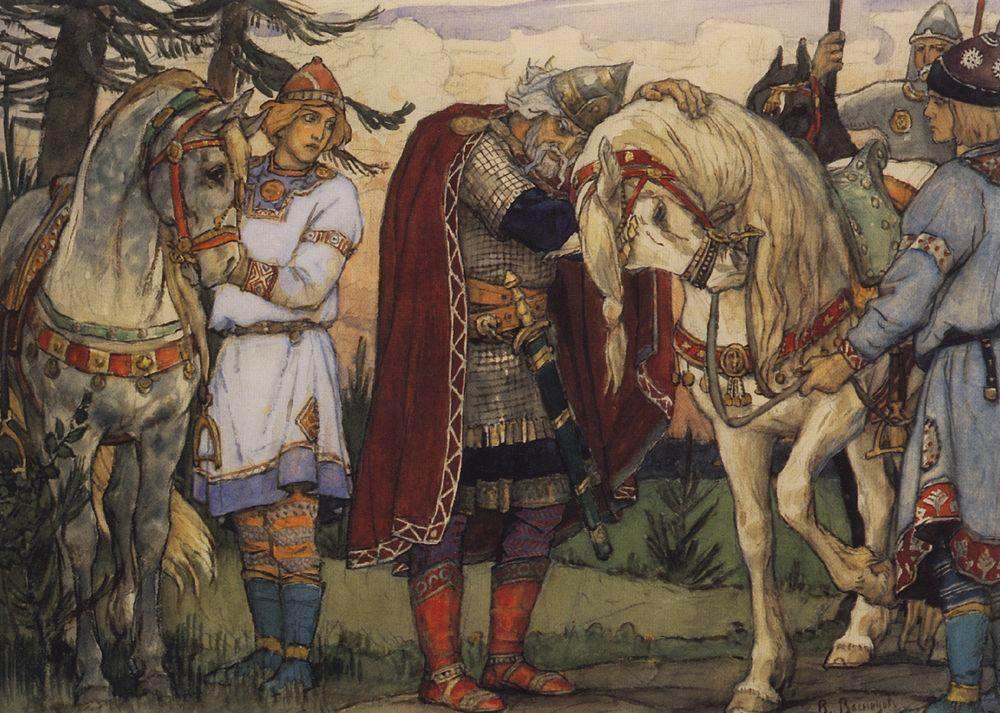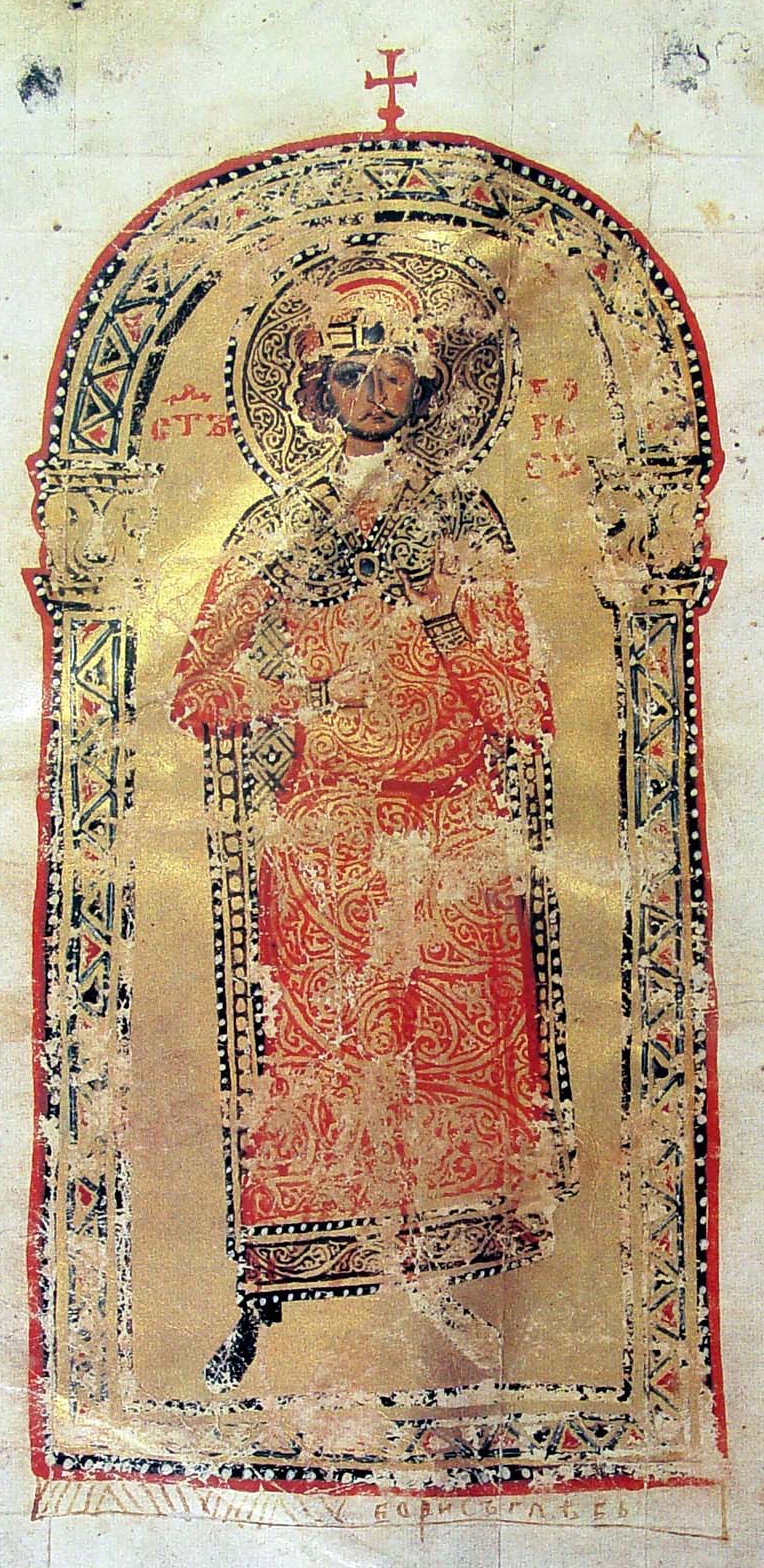|
Oleh Of Kyiv
Oleg (, ; ; died 912), also known as Oleg the Wise, was a Varangian prince of the Rus' who became prince of Kiev, and laid the foundations of the Kievan Rus' state. According to the ''Primary Chronicle'', he succeeded his "kinsman" Rurik as ruler of Novgorod, and subdued many of the East Slavic tribes to his rule, extending his control from Novgorod to the south along the Dnieper river. Oleg also launched a successful attack on Constantinople. He died in 912 and was succeeded by Rurik's son, Igor. This traditional dating has been challenged by some historians, who point out that it is inconsistent with such other sources as the Schechter Letter, which mentions the activities of a certain khagan HLGW ( usually transcribed ''Helgu''. Compare Swedish first name Helge.) of Rus' as late as the 940s, during the reign of Byzantine Emperor Romanus I. The nature of Oleg's relationship with the Rurikid ruling family of the Rus', and specifically with his successor Igor of Kiev, is a m ... [...More Info...] [...Related Items...] OR: [Wikipedia] [Google] [Baidu] |
Viktor Vasnetsov
Viktor Mikhaylovich Vasnetsov (; 15 May (New Style, N.S.), 1848 – 23 July 1926) was a Russian artist who specialised in mythological and historical subjects. He is considered a co-founder of Russian folklorist and romantic nationalistic painting, and a key figure in the Russian Revivalist movement. Biography Childhood (1848–1858) Viktor Vasnetsov was born in the remote village of Lopyal in Vyatka Governorate in 1848, the second of the seven children (his only sister died 4 months after her birth). His father Mikhail Vasilievich Vasnetsov (1823–1870), known to be philosophically inclined, was a member of the priesthood, and a scholar of the natural sciences and astronomy. His grandfather was an icon painter. Two of Mikhail Vasnetsov's six sons, Viktor and Apollinary Vasnetsov, Apollinary, became remarkable painters, three becoming schoolteachers and one a Russian folklorist. It was in Lopyal that Viktor started to paint, mostly landscapes and scenes of village life. Recal ... [...More Info...] [...Related Items...] OR: [Wikipedia] [Google] [Baidu] |
Tumulus
A tumulus (: tumuli) is a mound of Soil, earth and Rock (geology), stones raised over a grave or graves. Tumuli are also known as barrows, burial mounds, mounds, howes, or in Siberia and Central Asia as ''kurgans'', and may be found throughout much of the world. A cairn, which is a mound of stones built for various purposes, may also originally have been a tumulus. Tumuli are often categorised according to their external apparent shape. In this respect, a long barrow is a long tumulus, usually constructed on top of several burials, such as passage graves. A round barrow is a round tumulus, also commonly constructed on top of burials. The internal structure and architecture of both long and round barrows have a broad range; the categorization only refers to the external apparent shape. The method of may involve a dolmen, a cist, a mortuary enclosure, a mortuary house, or a chamber tomb. Examples of barrows include Duggleby Howe and Maeshowe. Etymology The word ''tumulus'' ... [...More Info...] [...Related Items...] OR: [Wikipedia] [Google] [Baidu] |
Trizna 1899
Trizna was a funeral feast of ancient Slavic religion, which was conducted for distinguished members of society before their cremation. Besides the feast and the wake, the deceased will have their body washed and dressed in the finest clothes before their cremation, and merry-making and contests were also held. According to tradition, this was done to symbolise the victory of life over death by repelling evil spirits with laughter. In villages in Bosnia Bosnia and Herzegovina, sometimes known as Bosnia-Herzegovina and informally as Bosnia, is a country in Southeast Europe. Situated on the Balkans, Balkan Peninsula, it borders Serbia to the east, Montenegro to the southeast, and Croatia to th ..., name ''trzan'' or ''trzna'' is used for a place in the middle of a village (more rarely near a crossroad) used for gatherings, which is considered to be derived from trizna. References Slavic customs Death customs Rituals {{reli-festival-stub ... [...More Info...] [...Related Items...] OR: [Wikipedia] [Google] [Baidu] |
Vladimir Pashuto
Vladimir Terentyevich Pashuto (; 19 April 1918 – 10 June 1983) was a Soviet Russian Marxist historian who specialized in the history of medieval Lithuania and Russia, especially in their foreign policies. He graduated from the Leningrad University in 1941 and joined the staff of the Institute of History of the Soviet Academy of Sciences in 1948. He was elected a corresponding member of the Academy of Sciences in 1976. He was awarded the Order of the Badge of Honor. In his 1958 monograph ''The Genesis of Lithuania'', he argued that it was the pressure of Teutonic invasions that forced the disparate Lithuanian tribes to forge a unified state known as the Grand Duchy of Lithuania. Pashuto is credited as consultant on several films about medieval Russia, including Tarkovsky's masterpiece ''Andrei Rublev'' (1966).И. П. Тюрин. "Перспектива памяти: кино, история, литература". Москва, 2004. Стр. 149. Pashuto and his colleague Ana ... [...More Info...] [...Related Items...] OR: [Wikipedia] [Google] [Baidu] |
Russian Konung Oleg By Vasnetsov 1
Russian(s) may refer to: *Russians (), an ethnic group of the East Slavic peoples, primarily living in Russia and neighboring countries *A citizen of Russia *Russian language, the most widely spoken of the Slavic languages *''The Russians'', a book by Hedrick Smith *Russian (comics), fictional Marvel Comics supervillain from ''The Punisher'' series *Russian (solitaire), a card game * "Russians" (song), from the album ''The Dream of the Blue Turtles'' by Sting *"Russian", from the album ''Tubular Bells 2003'' by Mike Oldfield *"Russian", from the album '' '' by Caravan Palace *Nik Russian, the perpetrator of a con committed in 2002 See also * *Russia (other) *Rus (other) *Rossiysky (other) *Russian River (other) *Rushen (other) Rushen may refer to: Places * Rushen, formally Kirk Christ Rushen, a historic parish of the Isle of Man ** Rushen (constituency), a House of Keys constituency of which the parish forms part ** Rushen (sheading ... [...More Info...] [...Related Items...] OR: [Wikipedia] [Google] [Baidu] |
Drevlians
The Drevlians, Derevlians or Derevlianians ( or , ) were a tribe of East Slavs between the 6th and the 10th centuries, which inhabited the territories of Polesia and right-bank Ukraine, west of the Polans (eastern), eastern Polans and along the lower reaches of the rivers Teteriv, Uzh (Pripyat), Uzh, Ubort, and Stsviha. To the west, the Drevlians' territories reached the Sluch (Ukraine), Sluch River, where the Volhynians (related to the territory of Volhynia) and Buzhans (related to the name of Southern Bug) lived. To the north, the Drevlians' neighbors were the Dregoviches. Etymology Their name is derived from Slavic ''drevo/древо'' or ''derevo/дерево'', meaning "wood" and "tree", because they lived in the forests. Their name may be rendered "the dwellers in the forest". They possibly were mentioned as ''Forsderen-Liudi'' by Bavarian Geographer in the 9th century. The ''Primary Chronicle'' (PVL) mentioned that those Slavs who settled in open fields had been called '' ... [...More Info...] [...Related Items...] OR: [Wikipedia] [Google] [Baidu] |
Knyaz
A , also , ''knjaz'' or (), is a historical Slavs, Slavic title, used both as a royal and noble title in different times. It is usually translated into English language, English as 'prince', 'king' or 'duke', depending on specific historical context and the potentially known Latin equivalents at the time; the word was originally derived from the Proto-Germanic language, common Germanic ('king'). Feminine forms of the word may be divided into two groups: * "Princess", be it princess consort (wife of a reigning prince), princess regnant (reigning princess ''suo jure''), or princess regent (reigning on behalf of an underage prince, usually her son after her husband's death) ** Belarusian language, Belarusian: ''kniahinia'' (княгіня) ** Bulgarian language, Bulgarian and Russian language, Russian: () ** Slovene language, Slovene, Serbo-Croatian, and Macedonian language, Macedonian: (in Serbian Cyrillic alphabet, Serbian and Macedonian alphabet, Macedonian Cyrillic: ) ** ... [...More Info...] [...Related Items...] OR: [Wikipedia] [Google] [Baidu] |
Smolensk
Smolensk is a city and the administrative center of Smolensk Oblast, Russia, located on the Dnieper River, west-southwest of Moscow. First mentioned in 863, it is one of the oldest cities in Russia. It has been a regional capital for most of the past millennium, beginning as the capital of an eponymous principality in the 11th-15th centuries, then the Smolensk Voivodeship of Lithuania and Poland, and Smolensk Governorate and Oblast within Russia. It was the main stronghold of the Smolensk Gate, a geostrategically significant pass between the Daugava and Dnieper rivers, and as such was an important point of contention in the struggle for dominance in Eastern Europe, passing at various times between Lithuania, Poland and Russia. In more recent history, it was captured by Napoleon's Franco–Polish forces and Hitler's Germany during their marches towards Moscow, and was the place of the Smolensk air disaster of 2010. It has a population of Etymology The name of the c ... [...More Info...] [...Related Items...] OR: [Wikipedia] [Google] [Baidu] |
Romanus I
Romanos I Lakapenos or Lekapenos (; 870 – 15 June 948), Latinized as Romanus I Lacapenus or Romanus I Lecapenus, was Byzantine emperor from 920 until his deposition in 944, serving as regent for and senior co-ruler of the young Constantine VII. Origin Romanos derived his epithet Lekapenos, now usually treated as a family name, from his birthplace of Lakape (later Laqabin) between Melitene and Samosata. It is found mostly as Lakapenos in the sources, although English-language scholarship in particular prefers the form Lekapenos, in large part due to Sir Steven Runciman's 1928 study on the emperor. He was the son of a peasant with the remarkable name of Theophylact "the Unbearable" (''Theophylaktos Abaktistos'' or ''Abastaktos''), who had rescued the Emperor Basil I from the enemy in battle at Tephrike in 872, saving his life, and had been rewarded by a place in the Imperial Guard and received estates as a reward.} Theophylaktos is usually identified as Armenian. Byzantinis ... [...More Info...] [...Related Items...] OR: [Wikipedia] [Google] [Baidu] |





